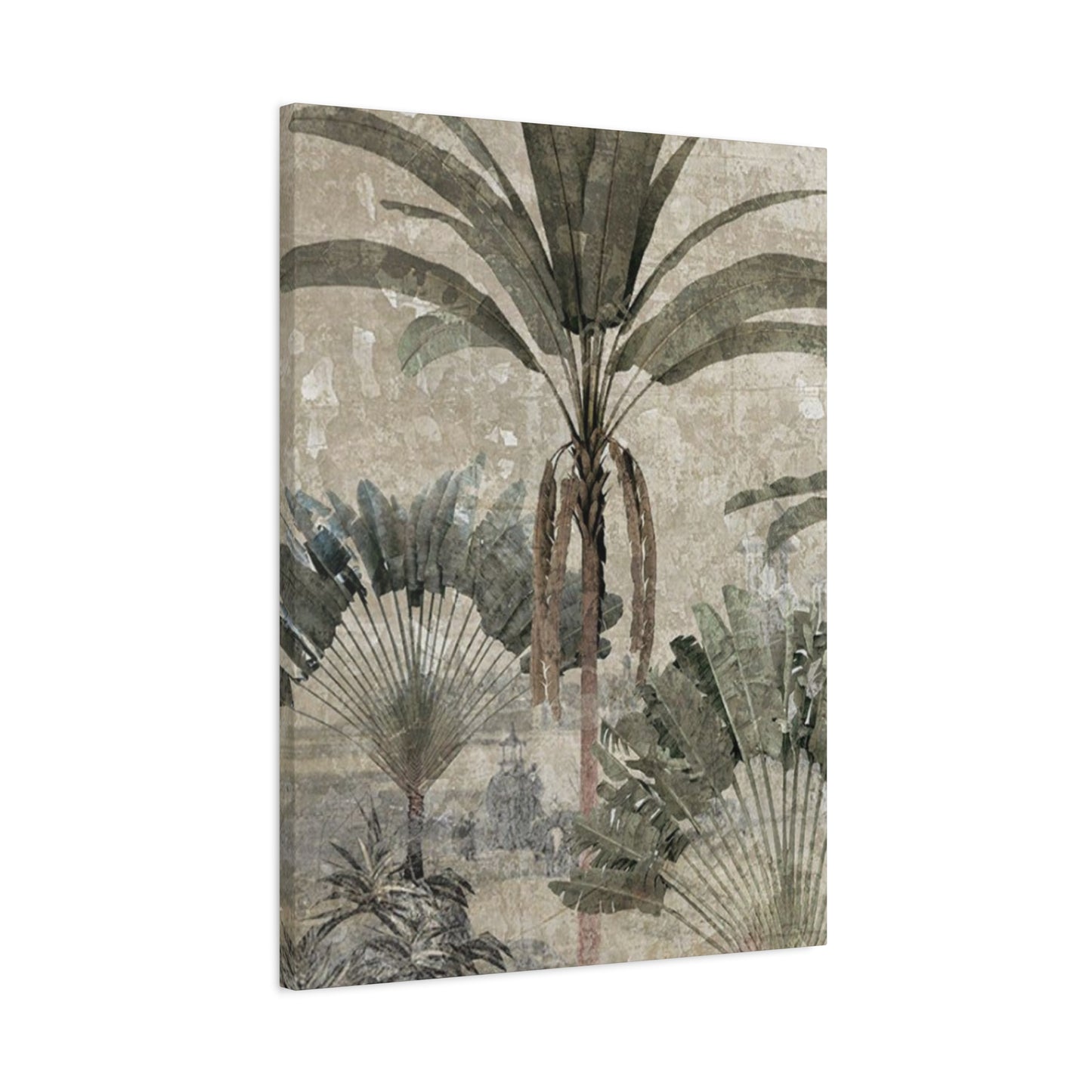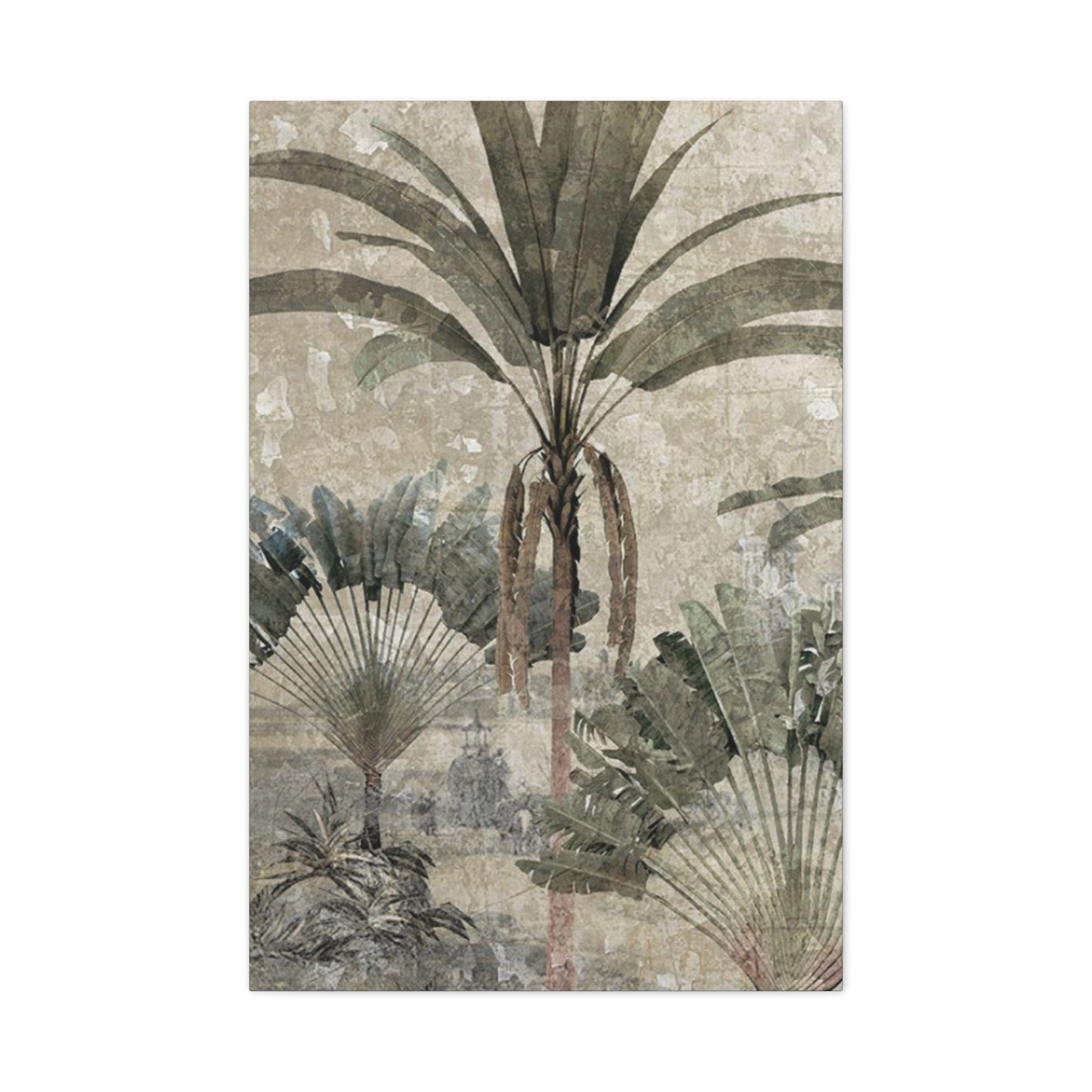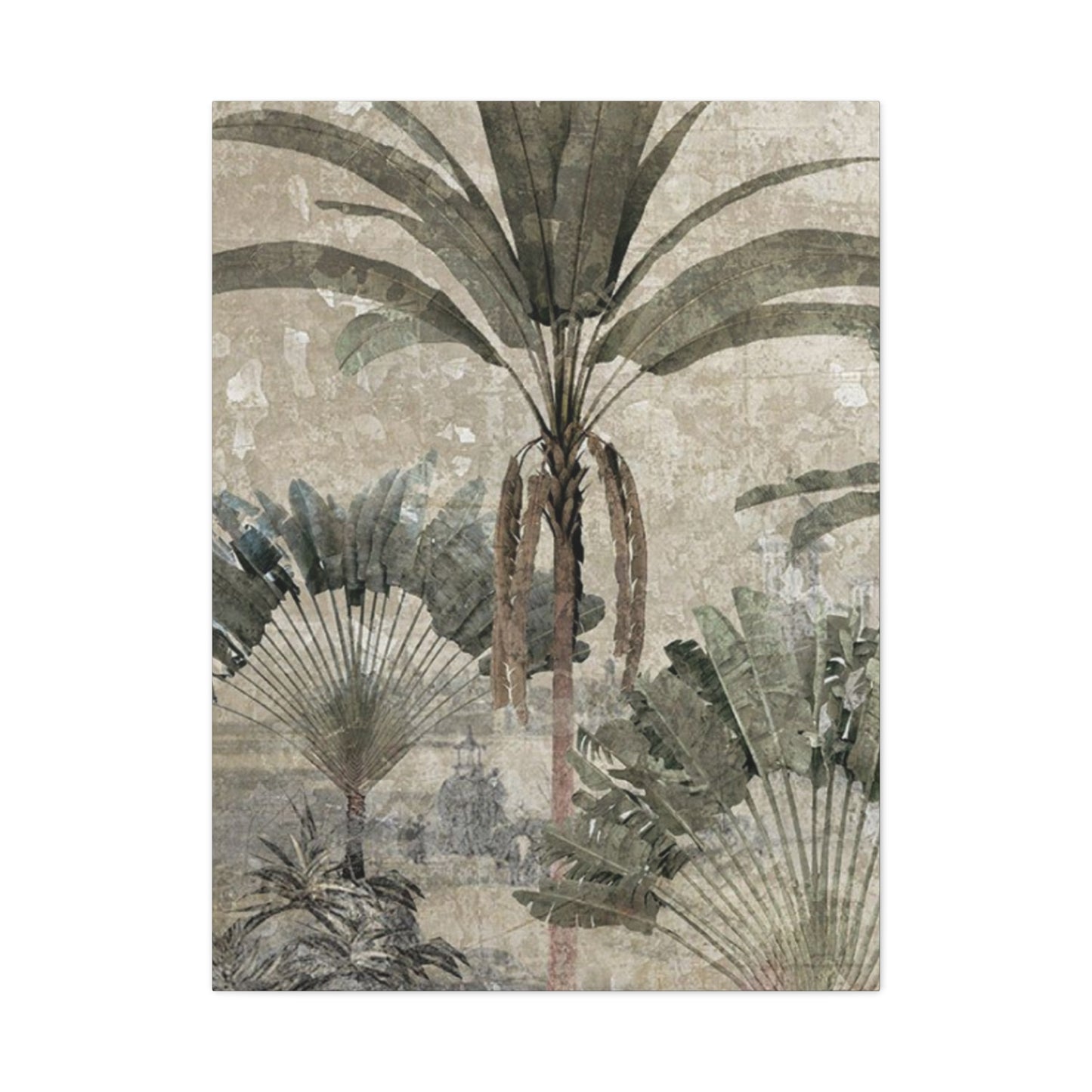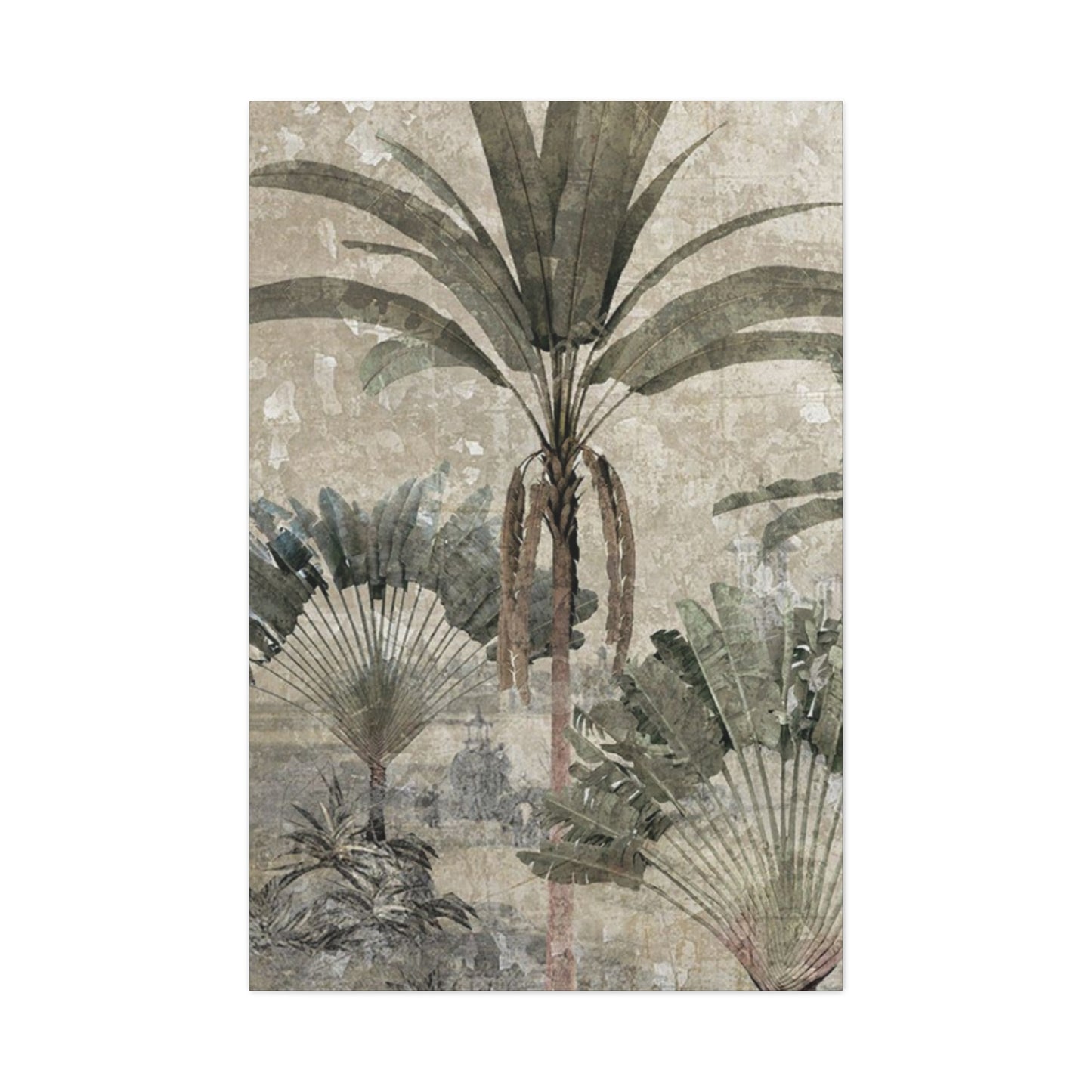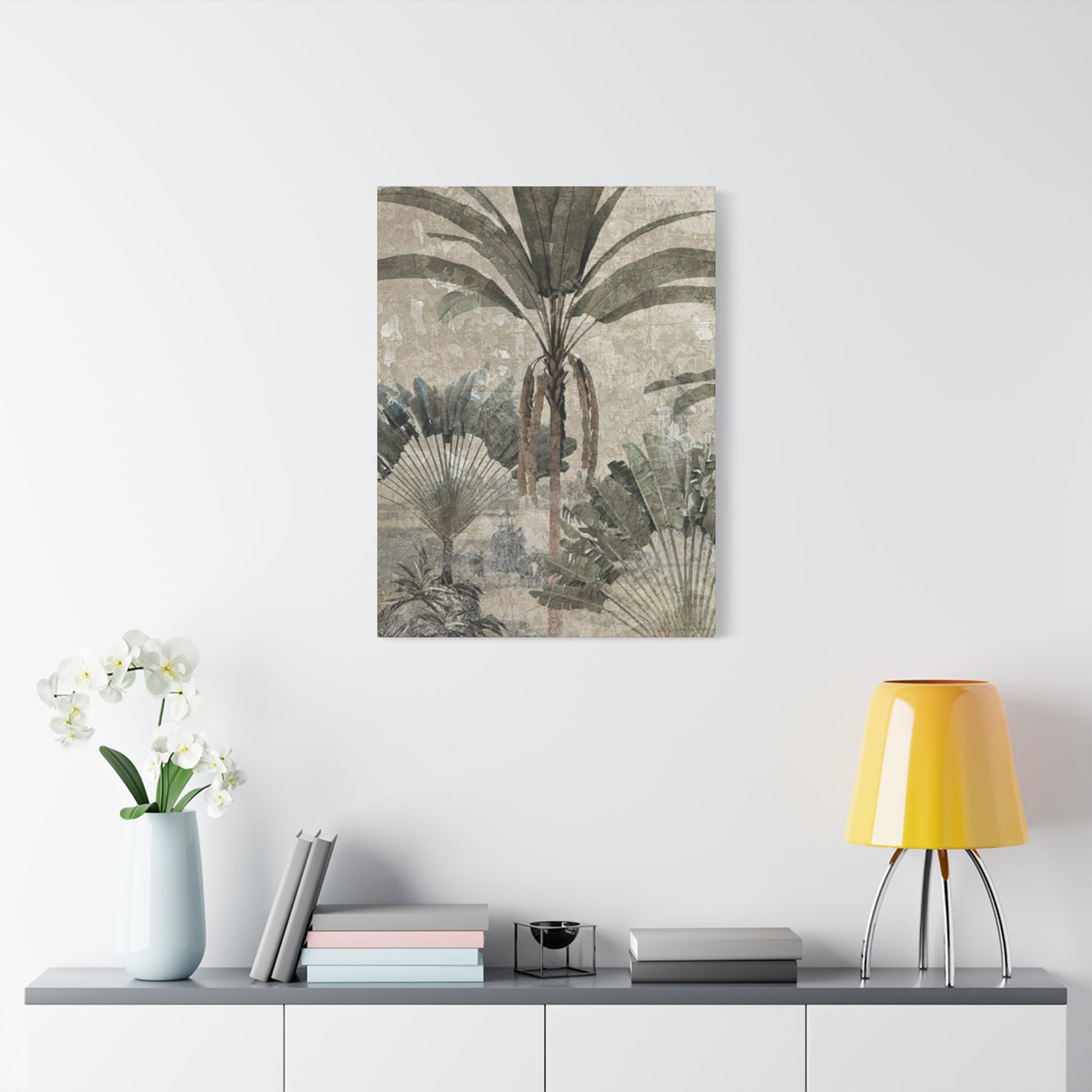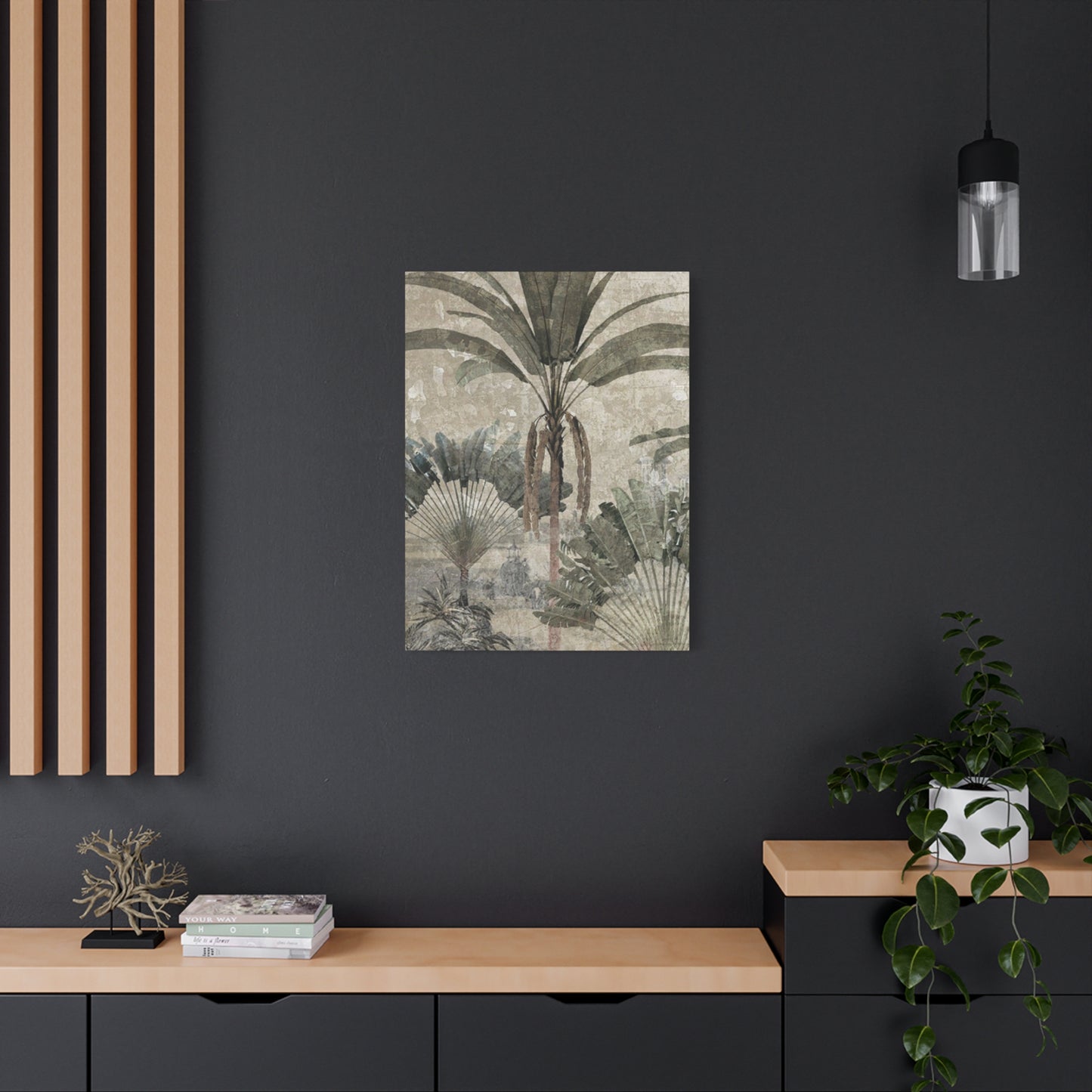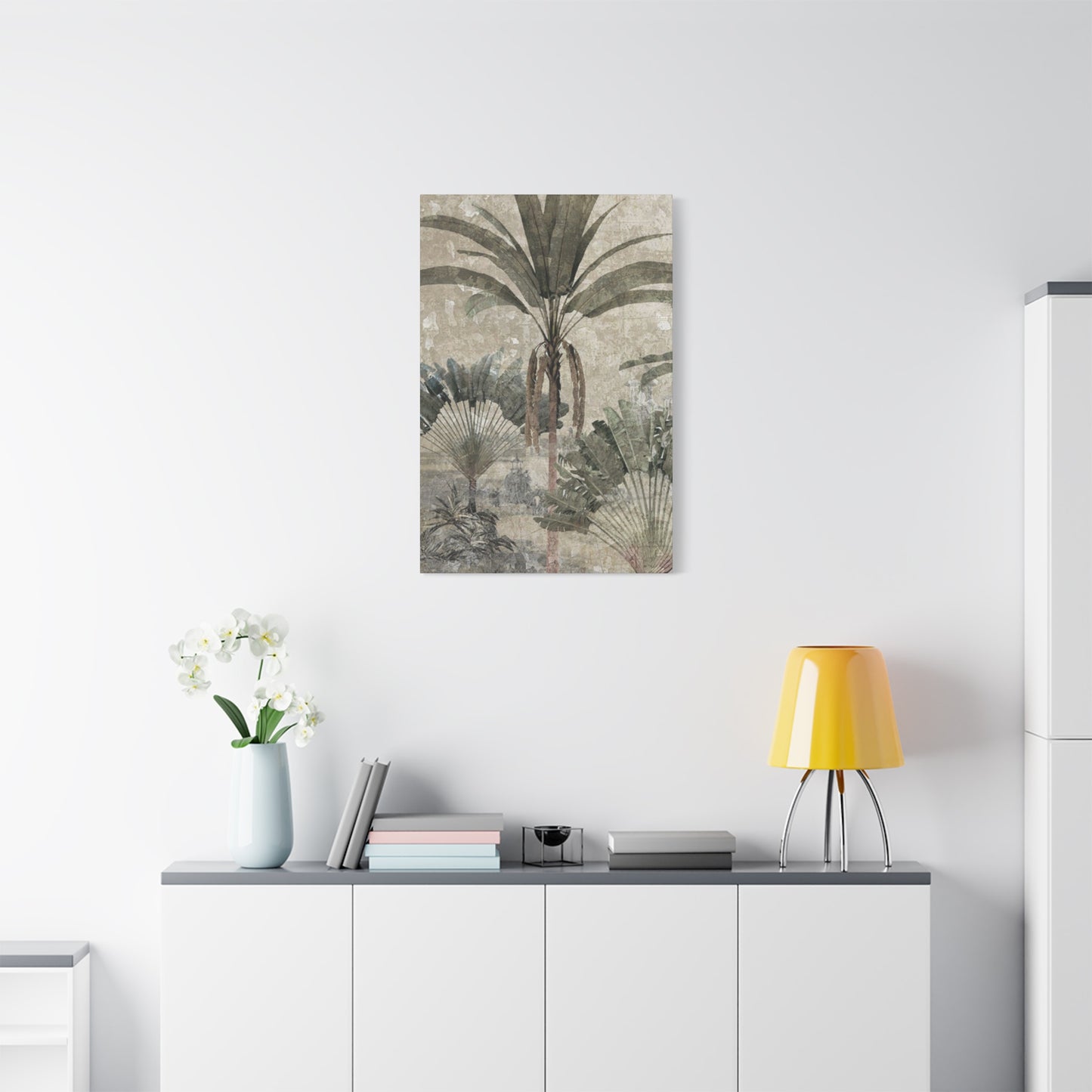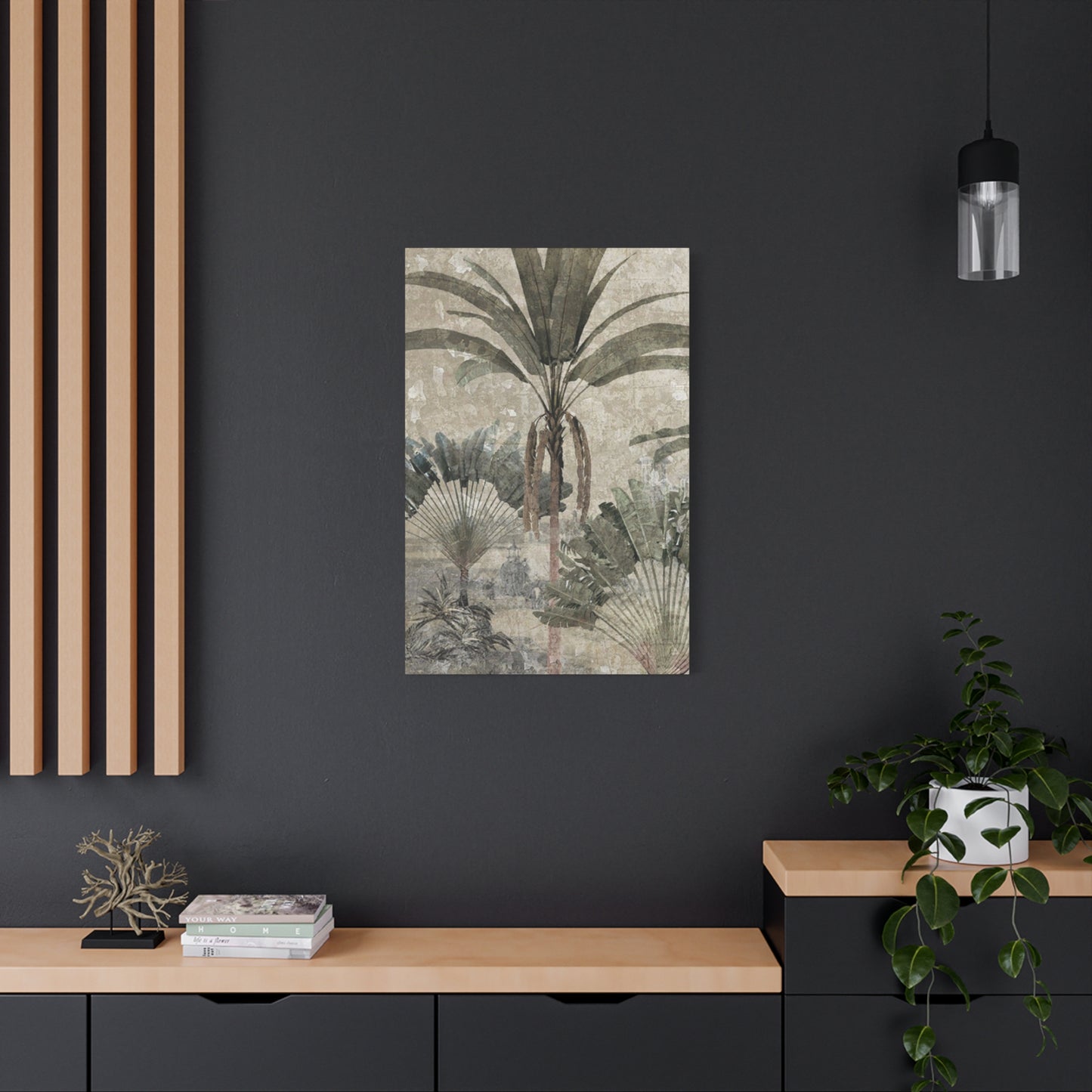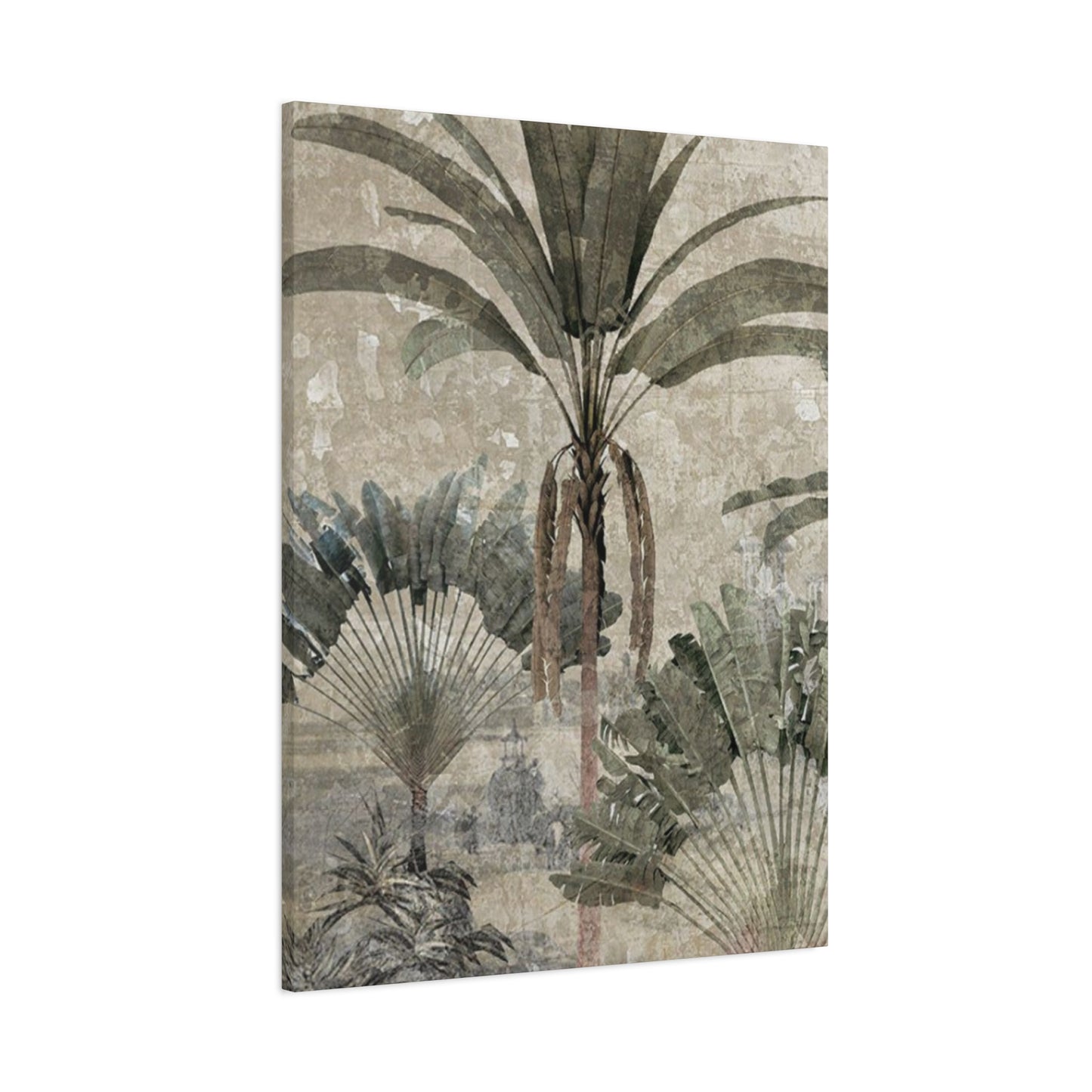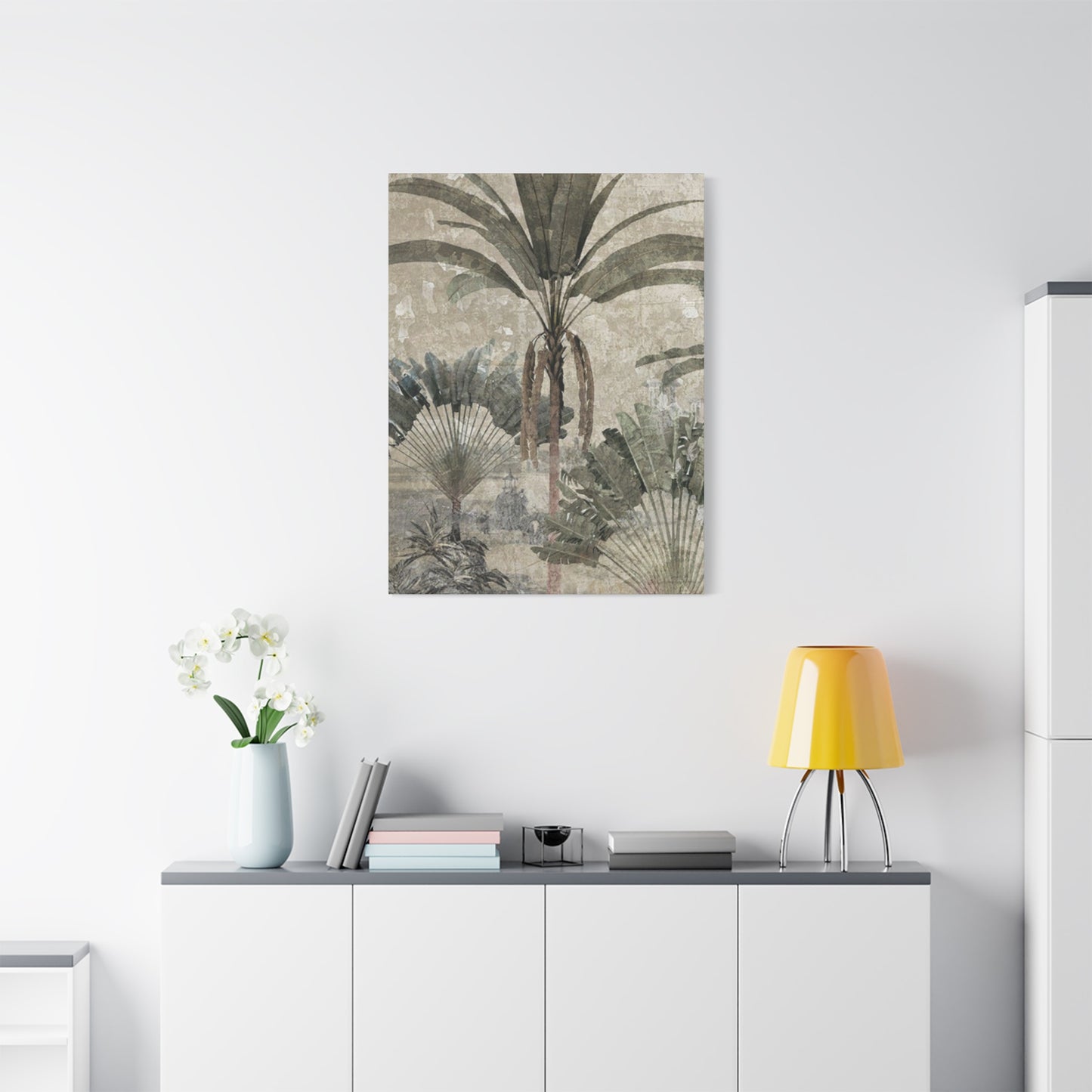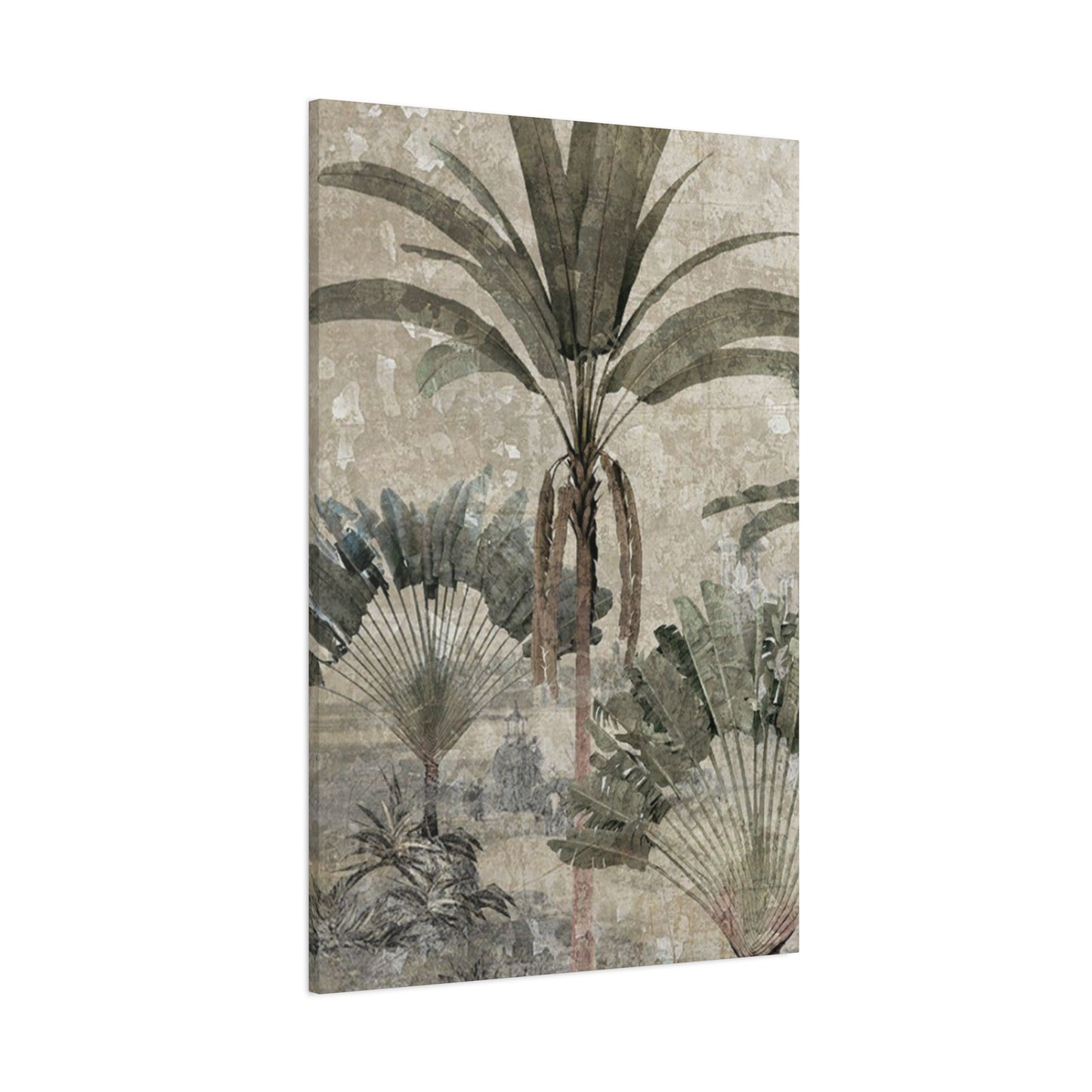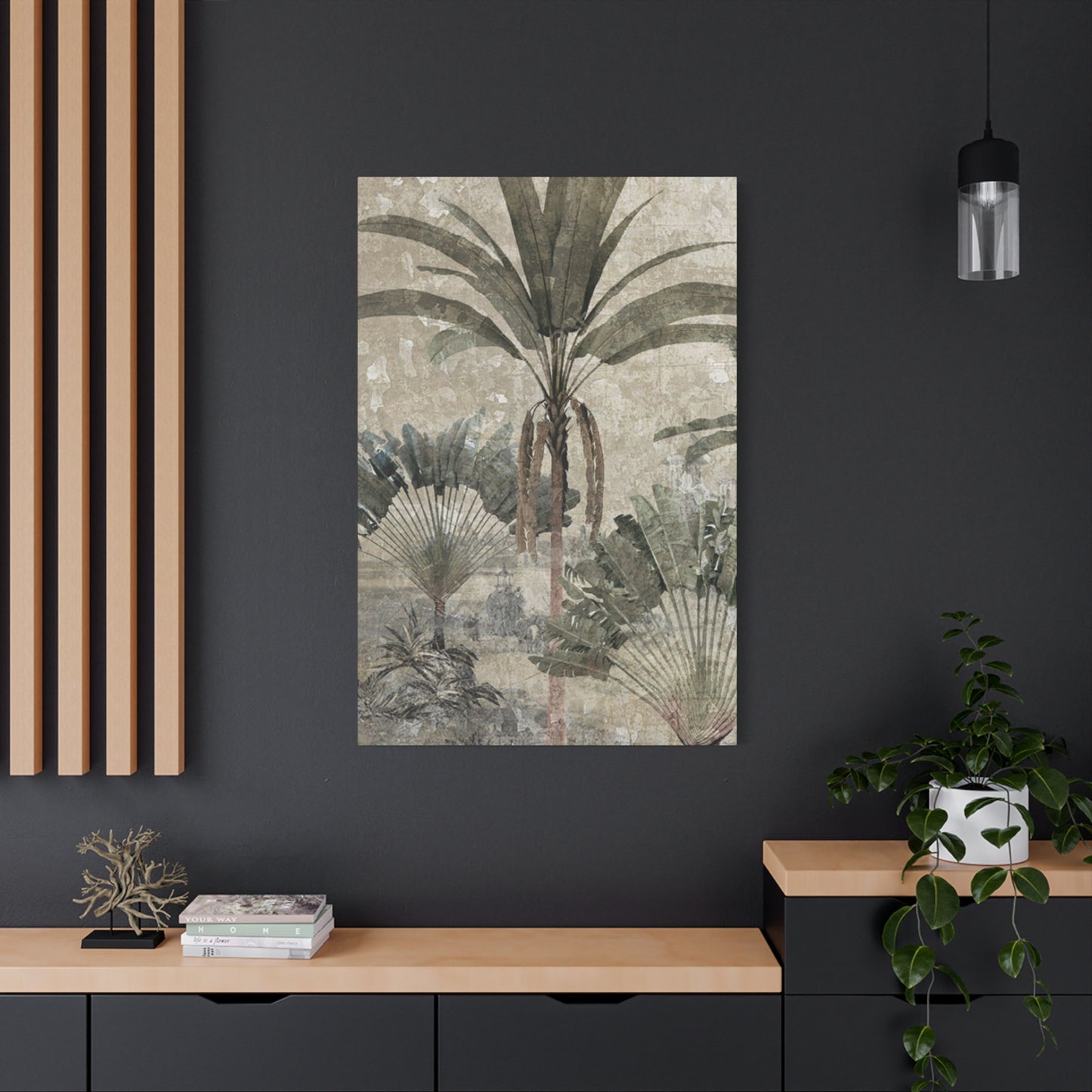Mixing Textures and Tones: Styling Your Space Around Palm Tree Wall Art
The allure of tropical aesthetics has transcended traditional beach house décor, evolving into a sophisticated design element that perfectly complements contemporary living spaces. Monochrome palm tree canvas art represents this evolution, offering the timeless appeal of tropical imagery while maintaining the refined elegance that modern interiors demand. This artistic approach combines the organic beauty of nature with the striking visual impact of black and white photography, creating pieces that serve as both focal points and harmonious elements within diverse design schemes.
The growing popularity of monochrome tropical wall art stems from its versatility and ability to bridge different design styles. Whether adorning minimalist lofts, traditional family homes, or cutting-edge office spaces, these pieces bring a sense of tranquility and sophistication that resonates with diverse audiences. The stark contrast inherent in black and white imagery creates visual depth while maintaining the clean lines that characterize contemporary design philosophy.
Modern interior designers increasingly recognize the power of nature-inspired art to create emotional connections within living spaces. Palm tree imagery, stripped of its vibrant tropical colors and rendered in monochrome, takes on new dimensions of meaning. These pieces no longer simply evoke vacation memories or tropical fantasies; instead, they represent growth, resilience, and the enduring beauty of natural forms. The artistic interpretation of palm trees in black and white elevates these botanical subjects from mere decorative elements to sophisticated artistic statements.
The technical excellence required to create compelling monochrome palm tree canvas art involves mastering the interplay of light and shadow, texture and form. Artists working in this medium must understand how to translate the complex visual information present in colorful tropical scenes into compositions that rely solely on tonal variation and contrast. This process often reveals hidden aspects of palm tree architecture that might be overlooked in full-color representations, highlighting the intricate patterns of fronds, the sculptural quality of trunks, and the dynamic interplay between individual trees and their environment.
Canvas as a medium particularly suits monochrome tropical art because of its ability to hold fine detail while providing the texture that enhances the organic nature of the subject matter. The weave of canvas adds subtle dimensionality to printed images, creating depth that flat surfaces cannot achieve. This textural quality becomes especially important when working with black and white imagery, as it provides additional visual interest that compensates for the absence of color variation.
The psychological impact of monochrome palm tree art extends beyond mere aesthetic appreciation. Research in environmental psychology suggests that nature imagery, even in simplified form, can reduce stress levels and improve cognitive function. The monochrome treatment of these natural subjects may actually enhance these benefits by removing the sensory overload that can accompany highly saturated tropical imagery. The simplified color palette allows viewers to focus on form, composition, and emotional response without distraction.
Professional interior designers often choose monochrome palm tree canvas art for its ability to create cohesive design narratives while introducing organic elements into structured environments. The contrast between the geometric precision of modern furniture and architecture and the flowing, organic lines of palm trees creates visual tension that energizes spaces without overwhelming them. This balance proves particularly effective in commercial settings where the goal is to create environments that feel both professional and welcoming.
The scalability of monochrome palm tree art makes it suitable for spaces of all sizes. Large-format pieces can serve as dramatic focal points in spacious rooms, while smaller works can be grouped to create gallery walls or used as accent pieces in intimate settings. The absence of color allows these pieces to integrate seamlessly with existing color schemes while providing the flexibility to accommodate future design changes without requiring art replacement.
Contemporary canvas printing technology has revolutionized the reproduction of monochrome palm tree art, allowing for unprecedented detail retention and tonal accuracy. Modern printing processes can capture subtle gradations in black and white photography while maintaining the artistic integrity of original works. This technological advancement has made high-quality monochrome tropical art accessible to a broader audience while ensuring that reproduced pieces maintain the impact and sophistication of original artworks.
The environmental consciousness that characterizes modern living aligns well with the natural themes present in palm tree art. Many consumers seek décor that reflects their values regarding sustainability and connection to nature. Monochrome palm tree canvas art satisfies this desire while maintaining the aesthetic sophistication demanded by contemporary design sensibilities. The enduring appeal of these natural subjects ensures that such pieces remain relevant and meaningful over time, reducing the need for frequent décor updates.
Stylish Canvas Prints of Palm Trees
Stylish canvas prints of palm trees represent a perfect fusion of artistic sophistication and tropical aesthetics, offering homeowners and designers a versatile décor solution that transcends traditional design boundaries. These contemporary interpretations of classic tropical imagery bring the serene beauty of palm trees into modern living spaces while maintaining the refined elegance that characterizes today's interior design trends. The transformation of vibrant tropical scenes into monochromatic masterpieces creates artwork that complements diverse color palettes and design philosophies.
The appeal of stylish palm tree canvas prints lies in their ability to evoke the tranquil essence of tropical environments without the overwhelming visual impact that full-color tropical art can sometimes create. By stripping away the bright greens, blues, and yellows typically associated with tropical imagery, these monochromatic interpretations focus attention on the inherent beauty of palm tree forms, the graceful curves of fronds, and the textural richness of bark patterns. This artistic approach allows the natural architecture of palm trees to take center stage, revealing design elements that might otherwise be overshadowed by color intensity.
Modern printing technology has elevated the quality of palm tree canvas prints to museum standards, ensuring that even reproduced works maintain the depth and nuance of original photographic or artistic pieces. High-resolution printing processes capture minute details in palm frond textures, bark patterns, and the subtle play of light and shadow that gives these images their compelling visual appeal. The canvas medium itself contributes to this quality, providing a textural foundation that enhances the organic nature of the subject matter while ensuring longevity and durability.
The styling versatility of palm tree canvas prints makes them suitable for an extensive range of interior design applications. In minimalist spaces, these pieces provide organic counterpoints to clean geometric lines while maintaining the simplified aesthetic that defines contemporary design. The monochromatic treatment ensures that the artwork integrates seamlessly with neutral color schemes while adding visual interest through form and composition rather than color contrast.
Professional interior designers increasingly specify palm tree canvas prints for their clients because of their proven ability to create focal points without overwhelming existing décor elements. The sophisticated treatment of tropical imagery allows these pieces to function effectively in formal settings such as corporate offices, upscale restaurants, and luxury hotels, where the goal is to create environments that feel both professional and welcoming. The natural subject matter provides psychological benefits associated with biophilic design principles while maintaining the visual restraint appropriate for business environments.
The emotional impact of stylish palm tree canvas prints extends beyond mere aesthetic appreciation. The organic forms and natural imagery can help create sense of calm and connection to nature within urban environments where access to green spaces may be limited. This psychological benefit becomes particularly valuable in home offices, bedrooms, and other personal spaces where stress reduction and mental well-being are priorities. The monochromatic treatment of these natural subjects may actually enhance these benefits by creating a meditative quality that encourages contemplation and relaxation.
Size flexibility represents another significant advantage of palm tree canvas prints in contemporary interior design. Large-format pieces can dominate wall spaces and serve as dramatic focal points in spacious rooms, while smaller works can be grouped to create dynamic gallery walls or used as accent pieces in more intimate settings. The monochromatic nature of these pieces allows for creative grouping arrangements without the color coordination challenges that can arise with full-spectrum tropical art.
The durability of canvas as a medium ensures that palm tree prints maintain their visual appeal over extended periods, making them sound investments for both residential and commercial applications. Unlike paper prints that may fade or deteriorate with exposure to light and humidity, properly prepared canvas prints resist environmental damage while maintaining color stability. This longevity proves particularly important for pieces that serve as central design elements in rooms where longevity and consistency are valued.
Contemporary canvas preparation techniques enhance both the visual appeal and durability of palm tree prints. Museum-quality gesso applications create smooth, consistent surfaces that optimize ink absorption and color accuracy during the printing process. Protective coatings applied after printing help preserve image quality while providing resistance to dust, moisture, and minor impacts that might occur in high-traffic areas.
The artistic interpretation of palm trees in canvas format allows for creative freedom that extends beyond literal photographic representation. Artists working in this medium can emphasize particular aspects of palm tree imagery, such as the dramatic silhouettes created by backlighting or the intricate patterns formed by overlapping fronds. This artistic flexibility ensures that each piece offers unique visual interest while maintaining connection to the natural world that inspires contemporary biophilic design principles.
Monochrome Tropical Wall Decor Ideas
Monochrome tropical wall decor ideas represent a sophisticated approach to incorporating natural elements into contemporary living spaces while maintaining the clean aesthetic lines that define modern interior design. The strategic use of black and white tropical imagery creates opportunities for innovative design applications that extend far beyond traditional picture hanging, opening possibilities for comprehensive wall treatments that transform entire rooms into serene, nature-inspired environments.
The foundation of effective monochrome tropical wall decor lies in understanding how different tropical elements translate into black and white imagery. Palm trees, with their distinctive silhouettes and textural variety, provide excellent subjects for monochromatic treatment, but the tropical design vocabulary extends to include bamboo groves, monstera leaves, tropical flowers, and coastal landscapes. Each element offers unique compositional opportunities and emotional associations that can be leveraged to create specific moods and design narratives within residential and commercial spaces.
Gallery wall arrangements using monochrome tropical imagery allow for dynamic visual storytelling that can adapt to various room sizes and architectural features. The key to successful gallery walls lies in balancing visual weight, maintaining consistent tonal relationships, and creating rhythmic patterns that guide the eye throughout the arrangement. Mixing different sizes of tropical prints while maintaining monochromatic consistency creates visual interest without the complexity that can arise when coordinating multiple color schemes.
Large-scale monochrome tropical installations can serve as dramatic focal points that anchor entire room designs. Oversized canvas prints or professionally installed wall murals featuring palm tree groves or tropical coastlines can transform plain walls into immersive environments that transport viewers to tranquil natural settings. The monochromatic treatment of these large installations ensures they enhance rather than overwhelm existing décor while providing the visual impact necessary to define spatial relationships within open floor plans.
The integration of monochrome tropical decor with architectural elements creates opportunities for seamless design transitions that blur the boundaries between art and environment. Custom installations that incorporate tropical imagery into built-in shelving, room dividers, or accent walls can create cohesive design narratives that feel intentional rather than merely decorative. This approach proves particularly effective in commercial environments where branding consistency and professional appearance are priorities.
Lighting design plays a crucial role in maximizing the impact of monochrome tropical wall decor. Strategic placement of accent lighting can enhance the textural qualities inherent in black and white imagery while creating dramatic shadow patterns that complement the organic forms present in tropical subjects. Picture lighting, track systems, and even creative use of natural light can transform static wall art into dynamic displays that change throughout the day as lighting conditions evolve.
The psychological benefits of monochrome tropical wall decor extend beyond aesthetic appreciation to include measurable impacts on stress reduction and cognitive function. Research in environmental psychology demonstrates that exposure to nature imagery, even in simplified monochromatic form, can lower cortisol levels and improve focus. The strategic placement of tropical décor in high-stress environments such as home offices or commercial waiting areas can contribute to improved user experience and well-being.
Seasonal adaptability represents another advantage of monochrome tropical wall decor. Unlike full-color tropical imagery that might feel inappropriate during winter months in temperate climates, black and white tropical art maintains year-round relevance. The timeless quality of monochromatic imagery ensures that tropical décor elements remain appropriate regardless of seasonal changes or evolving design trends.
The versatility of monochrome tropical décor allows for creative applications beyond traditional framed prints. Removable wall decals, temporary installations, and modular display systems enable renters and commitment-shy decorators to experiment with tropical aesthetics without permanent modifications. These flexible solutions prove particularly valuable in rental properties or commercial spaces where design changes must be reversible.
Material diversity in monochrome tropical wall decor extends beyond canvas to include metal prints, acrylic displays, and even textile installations. Each medium offers unique visual characteristics and practical advantages that can be matched to specific design requirements and environmental conditions. Metal prints provide ultra-modern aesthetics with exceptional durability, while textile installations offer softness and acoustic benefits that can improve room comfort.
The commercial application of monochrome tropical wall decor has gained particular traction in hospitality, healthcare, and corporate environments where the goal is to create welcoming atmospheres without sacrificing professional appearance. Hotels use tropical imagery to suggest escape and relaxation, medical facilities employ nature imagery to reduce patient anxiety, and corporate offices incorporate biophilic design elements to improve employee satisfaction and productivity.
Sleek Palm Tree Art for Living Spaces
Sleek palm tree art for living spaces represents a refined approach to incorporating tropical aesthetics into modern homes, emphasizing clean lines, sophisticated composition, and timeless appeal that transcends fleeting design trends. This artistic category focuses on streamlined interpretations of palm tree imagery that complement contemporary furniture and architectural elements while providing the natural connections that enhance psychological well-being within residential environments.
The definition of sleek in palm tree art encompasses several key characteristics: simplified compositions that eliminate visual clutter, emphasis on form over detail, strategic use of negative space, and sophisticated color palettes that integrate seamlessly with modern décor schemes. These elements combine to create artwork that functions as both aesthetic enhancement and design integration tool, serving dual purposes that maximize value for homeowners seeking versatile décor solutions.
Contemporary living spaces benefit significantly from the introduction of sleek palm tree art because these pieces provide organic counterpoints to the geometric precision that characterizes modern furniture and architecture. The natural curves and flowing lines inherent in palm tree imagery create visual relief from angular furniture pieces, hard surfaces, and structured room layouts. This contrast adds visual interest and emotional warmth without compromising the clean aesthetic that defines contemporary design philosophy.
The psychology of living space design emphasizes the importance of creating environments that support both relaxation and daily functioning. Sleek palm tree art contributes to this goal by introducing elements associated with vacation experiences, natural beauty, and stress-free environments. The sophisticated treatment of tropical imagery ensures that these psychological benefits can be accessed without creating spaces that feel theme-oriented or overly casual for everyday living.
Scale considerations play crucial roles in the successful integration of palm tree art into living spaces. Large-format pieces can serve as dominant focal points above sofas or fireplaces, while smaller works can be grouped to create gallery walls or used as accent pieces on console tables and built-in shelving. The sleek aesthetic of contemporary palm tree art allows for flexible sizing without loss of visual impact, making these pieces suitable for spaces ranging from compact apartments to expansive great rooms.
The color coordination advantages of sleek palm tree art become particularly apparent in living spaces where multiple design elements must work together harmoniously. Monochromatic or limited-palette tropical artwork integrates easily with existing color schemes while providing flexibility for future design changes. This adaptability proves especially valuable for homeowners who prefer to update their décor periodically without replacing major art investments.
Technological advances in printing and reproduction have made high-quality sleek palm tree art accessible to broader audiences while maintaining the sophisticated appearance that characterizes original works. Modern printing processes can capture subtle tonal variations and fine detail that preserve artistic integrity while offering the durability and affordability that make canvas prints practical choices for residential applications.
The durability requirements for living space art differ significantly from those for artwork in low-traffic areas. Sleek palm tree art must withstand exposure to natural light, temperature variations, and the general activity associated with daily family life. High-quality canvas prints with protective coatings and UV-resistant inks ensure that these pieces maintain their visual appeal over extended periods while requiring minimal maintenance.
Placement strategies for sleek palm tree art in living spaces should consider both aesthetic impact and practical functionality. Artwork positioned above seating areas should be sized and hung to create pleasing proportional relationships with furniture while remaining high enough to avoid damage from normal use. The sophisticated nature of sleek palm tree art makes it suitable for prominent placement where it will be frequently viewed and appreciated.
The integration of sleek palm tree art with lighting design creates opportunities for enhanced visual impact and mood control within living spaces. Strategic accent lighting can highlight textural elements in canvas prints while creating dramatic effects that complement the tropical subject matter. Dimmer controls allow residents to adjust lighting levels throughout the day, creating different moods and atmospheres that support various activities from entertaining to relaxation.
Seasonal considerations affect the perception and appreciation of palm tree art in living spaces located in temperate climates. The sleek, sophisticated treatment of tropical imagery ensures year-round appropriateness while providing psychological benefits that may be particularly valuable during winter months when access to natural beauty is limited. The timeless quality of well-executed palm tree art maintains relevance regardless of seasonal changes or evolving personal preferences.
The investment value of sleek palm tree art for living spaces extends beyond immediate aesthetic benefits to include potential contribution to property appeal and value. Well-chosen artwork that complements architectural features and demonstrates sophisticated taste can enhance the overall perception of residential properties. The universal appeal of nature-inspired art and the contemporary treatment of tropical themes ensure broad market acceptance.
Nature-Inspired Wall Art
Black and white nature-inspired wall art represents a sophisticated artistic category that combines the timeless appeal of natural imagery with the refined elegance of monochromatic composition, creating pieces that transcend decorative function to become integral elements of contemporary interior design. This artistic approach strips away the distracting elements of color to focus attention on fundamental design principles: form, texture, composition, and emotional impact.
The philosophical foundations of black and white nature art rest on the belief that natural forms possess inherent beauty that can be enhanced rather than diminished by the removal of color information. This reductive approach forces both artists and viewers to engage more deeply with the essential characteristics of natural subjects, revealing structural elements and compositional relationships that might be overlooked in full-color representations.
The technical mastery required to create compelling black and white nature-inspired art involves sophisticated understanding of tonal relationships, contrast management, and the subtle gradations that create depth and dimension without color support. Artists working in this medium must possess exceptional skill in manipulating light and shadow to create visual interest and emotional impact. The absence of color places greater emphasis on texture, pattern, and form as primary vehicles for artistic expression.
Contemporary photography has embraced black and white nature imagery as a means of creating artwork that feels both classic and thoroughly modern. The techniques developed by master photographers of the twentieth century continue to influence contemporary artists who use digital tools to achieve similar effects while exploring new possibilities for creative expression. The combination of traditional aesthetic principles with modern technology creates opportunities for innovation within established artistic frameworks.
The psychological impact of black and white nature-inspired art differs significantly from that of color imagery. Research suggests that monochromatic images may actually enhance certain emotional responses by eliminating the sensory complexity that can accompany full-spectrum visual input. The simplified palette allows viewers to focus on emotional and symbolic content without the potential distraction of color associations and preferences.
The versatility of black and white nature art makes it particularly valuable for commercial and residential applications where design flexibility is paramount. These pieces can integrate seamlessly with virtually any color scheme while providing the visual interest and natural connections that characterize successful biophilic design. The monochromatic treatment ensures that artwork remains relevant as surrounding décor evolves over time.
Scale considerations for black and white nature-inspired wall art encompass both practical and aesthetic factors. Large-format pieces can create dramatic focal points that anchor entire room designs, while smaller works can be grouped to create dynamic gallery walls or used as accent pieces. The absence of color allows for creative grouping possibilities that might be challenging with colorful artwork, as tonal harmony can be maintained across multiple pieces more easily than color coordination.
The print quality requirements for black and white nature art are exceptionally demanding because subtle tonal variations that might be masked by color in full-spectrum imagery become crucial elements in monochromatic compositions. Modern printing technology can achieve the tonal accuracy necessary to preserve the artistic integrity of original works while providing the durability required for residential and commercial applications.
The historical context of black and white nature photography provides rich artistic heritage that informs contemporary interpretations of natural subjects. The work of masters such as Ansel Adams, Edward Weston, and Minor White established aesthetic standards and creative approaches that continue to influence artists working in digital media. This historical foundation provides depth and legitimacy to contemporary black and white nature art while inspiring continued innovation within the medium.
The environmental movement has influenced the appreciation of black and white nature-inspired art by emphasizing the importance of preserving and celebrating natural beauty. Artwork that captures the essence of natural environments without exploiting them for commercial purposes aligns with contemporary values regarding environmental responsibility and sustainable living practices.
The commercial applications of black and white nature-inspired wall art extend across diverse industries and environments. Corporate offices use these pieces to create professional atmospheres that incorporate biophilic design principles without appearing overly casual. Healthcare facilities employ nature imagery to reduce patient anxiety and create healing environments. Hospitality venues use sophisticated nature art to suggest luxury and refinement while maintaining universal appeal.
The educational potential of black and white nature art should not be overlooked. These pieces can serve as starting points for discussions about artistic technique, natural science, environmental conservation, and the relationship between human beings and the natural world. The sophisticated treatment of natural subjects makes these works appropriate for academic and cultural institutions where educational value enhances aesthetic appeal.
Contemporary Palm Tree Canvas Prints
Contemporary palm tree canvas prints represent the evolution of tropical art from traditional vacation-themed decoration into sophisticated design elements that complement modern interior aesthetics while maintaining their connection to natural beauty and tranquil environments. This artistic category emphasizes innovative approaches to classic subjects, incorporating current design trends and printing technologies to create pieces that feel both timeless and thoroughly contemporary.
The definition of contemporary in palm tree art encompasses several key elements: innovative composition techniques that challenge traditional tropical imagery conventions, sophisticated color palettes that extend beyond typical tropical bright colors, integration with current interior design trends, and artistic interpretations that reveal new aspects of familiar subjects. These characteristics combine to create artwork that appeals to design-conscious consumers while maintaining the universal appeal of natural imagery.
Modern printing technology has revolutionized the production of contemporary palm tree canvas prints, enabling unprecedented detail retention, color accuracy, and durability that rivals original artwork. Advanced digital printing processes can capture the subtle textural variations in palm bark, the intricate patterns of frond arrangements, and the complex interplay of light and shadow that gives palm tree imagery its compelling visual appeal. These technological capabilities allow for mass production of high-quality prints that maintain artistic integrity while remaining accessible to broad audiences.
The artistic interpretation of palm trees in contemporary canvas prints often involves creative approaches that extend beyond literal representation. Artists may emphasize particular aspects of palm tree imagery, such as the geometric patterns created by frond arrangements, the sculptural quality of trunk forms, or the rhythmic repetition found in palm groves. These interpretive approaches create unique visual interest while maintaining connection to the natural subjects that inspire contemporary biophilic design principles.
Color palette innovations in contemporary palm tree prints reflect current interior design trends while maintaining the natural associations that make tropical imagery psychologically beneficial. Monochromatic treatments, limited color schemes, and sophisticated tonal variations create pieces that integrate seamlessly with neutral contemporary décor while providing the visual interest necessary to serve as effective focal points or accent elements.
The sizing flexibility of contemporary palm tree canvas prints accommodates diverse spatial requirements and design applications. Large-format installations can create immersive environments that transform entire walls into tropical landscapes, while smaller pieces can be grouped to create dynamic gallery walls or used as standalone accent pieces. The contemporary treatment of palm tree imagery ensures visual impact at any scale while maintaining the sophistication appropriate for modern interior design.
The psychological benefits associated with palm tree imagery remain relevant in contemporary interpretations while being enhanced by sophisticated artistic treatment. Research in environmental psychology demonstrates that natural imagery, including stylized or abstracted representations, can reduce stress levels and improve cognitive function. Contemporary palm tree prints provide these benefits while maintaining the visual sophistication demanded by modern design sensibilities.
The durability requirements for contemporary canvas prints reflect the realities of modern living environments where artwork must withstand exposure to artificial lighting, temperature variations, and the general activity associated with daily life. High-quality canvas substrates, archival inks, and protective coatings ensure that contemporary palm tree prints maintain their visual appeal over extended periods while requiring minimal maintenance.
The commercial applications of contemporary palm tree canvas prints span diverse industries and environments where the goal is to create welcoming atmospheres without sacrificing professional appearance. Hotels and resorts use sophisticated tropical imagery to enhance their brand identities while appealing to guests' desires for relaxation and escape. Corporate offices incorporate biophilic design elements to improve employee satisfaction and productivity while maintaining professional atmospheres.
The integration of contemporary palm tree prints with modern interior design requires understanding of current trends in furniture, color, and spatial arrangement. These pieces work particularly well with mid-century modern furniture, minimalist décor schemes, and industrial design elements, creating interesting contrasts between natural organic forms and geometric precision. The sophisticated treatment of tropical subjects ensures compatibility with high-end design applications.
The investment value of contemporary palm tree canvas prints extends beyond immediate aesthetic benefits to include consideration of artistic merit, production quality, and market appeal. Well-executed pieces by recognized artists or produced using premium materials and processes may appreciate in value over time while providing ongoing enjoyment for their owners. The universal appeal of natural imagery and the sophisticated treatment of tropical themes ensure broad market acceptance.
The environmental consciousness that characterizes contemporary consumer preferences aligns well with the natural themes present in palm tree art. Many buyers seek décor that reflects their values regarding sustainability and connection to nature while maintaining the aesthetic sophistication demanded by modern design sensibilities. Contemporary palm tree prints satisfy these requirements while providing the timeless appeal that ensures long-term relevance and satisfaction.
Tropical Wall Art for Office Interiors
Tropical wall art for office interiors represents a strategic approach to workplace design that incorporates the psychological benefits of natural imagery while maintaining the professional atmosphere essential for productive business environments. This application of biophilic design principles recognizes the proven connection between natural elements and improved employee well-being, creativity, and performance while addressing the practical requirements of commercial spaces.
The selection of tropical wall art for office environments requires careful consideration of professional appropriateness, brand alignment, and employee demographics. Sophisticated interpretations of tropical subjects, particularly those rendered in monochromatic or muted color palettes, can provide the psychological benefits associated with natural imagery without creating atmospheres that feel overly casual or vacation-oriented. The key lies in choosing pieces that suggest professionalism while incorporating the organic elements that support human psychological well-being.
Research in environmental psychology demonstrates that exposure to natural imagery, including artistic representations of tropical environments, can reduce stress levels, improve focus, and enhance creative thinking among office workers. These benefits translate into measurable improvements in employee satisfaction, productivity, and retention rates, making tropical wall art not merely decorative but strategically valuable for business operations. The sophisticated treatment of tropical subjects ensures these benefits can be accessed without compromising professional appearance.
The acoustic properties of canvas prints provide additional benefits in office environments where noise control contributes significantly to worker comfort and productivity. Canvas surfaces absorb sound waves rather than reflecting them, helping to reduce noise levels and improve acoustic comfort in open office layouts. Large tropical canvas installations can serve dual purposes as both aesthetic enhancements and acoustic treatment solutions.
The placement strategies for tropical wall art in office interiors must consider both aesthetic impact and practical functionality. Common areas such as reception spaces, conference rooms, and break areas benefit from larger installations that create focal points and conversation starters. Individual work areas may be enhanced by smaller pieces that provide personal visual respite without creating distractions. The monochromatic or sophisticated color treatment of tropical imagery ensures appropriateness across diverse office environments.
The maintenance requirements for office wall art differ from those in residential applications due to higher traffic levels, extended lighting exposure, and the need for professional appearance maintenance. High-quality canvas prints with protective coatings and fade-resistant inks ensure that tropical artwork maintains its visual appeal over extended periods while requiring minimal upkeep. The durability of canvas substrates makes them particularly suitable for high-traffic commercial environments.
The brand identity implications of tropical wall art in office settings require careful consideration to ensure alignment with company values and market positioning. Technology companies might embrace tropical imagery as a reflection of innovation and forward-thinking approaches, while financial institutions might prefer more subtle interpretations that suggest stability and growth. The versatility of contemporary tropical art allows for customization that supports diverse brand identities.
The cost-effectiveness of tropical wall art for office interiors becomes apparent when considering the expenses associated with employee turnover, reduced productivity, and workplace stress-related issues. The relatively modest investment required for high-quality tropical artwork can provide significant returns through improved employee satisfaction and performance. Additionally, the durability of canvas prints ensures that initial investments provide value over extended periods.
The lighting considerations for tropical wall art in office environments encompass both natural and artificial light sources. Strategic placement can take advantage of natural light to enhance the visual impact of tropical imagery while artificial lighting systems can be designed to highlight artwork during evening hours or in interior spaces without window access. LED lighting technology provides energy-efficient solutions that minimize heat generation while offering precise color rendering.
The seasonal benefits of tropical wall art become particularly apparent in office environments located in temperate climates where winter months can negatively impact employee mood and energy levels. The year-round appropriateness of sophisticated tropical imagery provides psychological benefits that may be especially valuable during periods when access to natural beauty is limited. The timeless quality of well-executed tropical art ensures consistent positive impact regardless of seasonal changes.
The integration of tropical wall art with overall office design schemes requires understanding of contemporary commercial interior design trends. Industrial design elements, minimalist furniture, and neutral color palettes all work well with sophisticated tropical imagery, creating interesting contrasts between organic natural forms and structured commercial environments. This integration approach ensures that artwork enhances rather than conflicts with existing design investments.
The scalability of tropical wall art installations allows for phased implementation that can accommodate budget constraints while providing immediate benefits. Initial installations in high-visibility areas can demonstrate value and employee response, informing decisions about expanded applications throughout office spaces. The modular nature of canvas prints allows for flexible arrangement and reconfiguration as office layouts evolve over time.
Minimalist Black & White Palm Tree Designs
Minimalist black and white palm tree designs represent the distillation of tropical imagery to its most essential elements, creating artwork that achieves maximum visual impact through strategic simplification rather than complex detail. This approach aligns perfectly with contemporary design philosophy that emphasizes the power of restraint and the beauty found in carefully edited compositions that eliminate non-essential elements while preserving emotional resonance and aesthetic appeal.
The principles of minimalist design, when applied to palm tree imagery, focus attention on fundamental visual elements: line quality, compositional balance, tonal relationships, and the strategic use of negative space. These elements combine to create pieces that communicate the essence of tropical environments without the visual complexity that can overwhelm contemporary interior spaces. The result is artwork that feels both sophisticated and accessible, providing natural connections without compromising the clean aesthetics that define modern design.
The psychological impact of minimalist black and white palm tree designs may actually be enhanced by the reductive approach that characterizes this artistic style. By eliminating sensory overload through color restriction and compositional simplification, these pieces allow viewers to engage more directly with the emotional and symbolic content of tropical imagery. The meditative quality that often emerges from minimalist compositions can provide stress relief and mental clarity that proves particularly valuable in high-pressure contemporary environments.
The technical execution of minimalist palm tree designs requires exceptional artistic skill because the simplified approach leaves no room for covering weaknesses through complexity or decoration. Every line, tone, and compositional decision must serve the overall artistic vision while contributing to the emotional impact of the finished piece. This demanding approach ensures that successful minimalist tropical art possesses exceptional quality and enduring appeal.
The versatility of minimalist black and white palm tree designs makes them particularly valuable for diverse interior design applications. The simplified compositions integrate seamlessly with various furniture styles, architectural elements, and color schemes while maintaining their distinctive character and visual impact. This adaptability proves especially important for consumers who prefer décor elements that remain relevant as their personal tastes and living situations evolve over time.
The scale considerations for minimalist palm tree designs encompass both practical and aesthetic factors that differ from those applicable to more complex tropical imagery. The simplified nature of minimalist compositions allows for successful reproduction at various sizes without loss of impact, making these pieces suitable for applications ranging from intimate accent pieces to large-format installations. The clarity of minimalist compositions ensures readability and emotional impact regardless of viewing distance.
The printing requirements for minimalist black and white palm tree designs emphasize precision in tonal reproduction and edge definition because the simplified compositions magnify any technical imperfections. High-quality printing processes that can accurately reproduce subtle tonal gradations and maintain sharp edge definition are essential for preserving the artistic integrity of minimalist works. The investment in superior printing quality proves particularly important for pieces that rely on technical excellence rather than complex detail to achieve their impact.
The historical context of minimalist art provides rich philosophical foundations that inform contemporary interpretations of tropical subjects. The minimalist movement's emphasis on essential elements, spatial relationships, and viewer engagement creates frameworks that can be applied to natural imagery while maintaining connection to established artistic traditions. This historical grounding provides legitimacy and depth to contemporary minimalist tropical art.
The commercial applications of minimalist black and white palm tree designs span industries and environments where sophisticated simplicity aligns with brand values and design objectives. Technology companies often embrace minimalist aesthetics as reflections of innovation and clarity, while luxury brands use simplified compositions to suggest exclusivity and refined taste. The universal appeal of well-executed minimalist art ensures broad market acceptance across diverse demographics.
The environmental implications of minimalist design philosophy align with contemporary values regarding sustainability and conscious consumption. The emphasis on quality over quantity, timeless appeal over trendy decoration, and essential elements over superficial complexity reflects growing awareness of environmental responsibility. Minimalist palm tree designs embody these values while providing the natural connections that support human psychological well-being.
The educational potential of minimalist black and white palm tree designs extends beyond aesthetic appreciation to include discussions about artistic technique, design philosophy, and the relationship between simplicity and impact. These pieces can serve as starting points for conversations about contemporary art, environmental awareness, and the role of natural imagery in modern life. The sophisticated treatment of familiar subjects makes these works appropriate for academic and cultural institutions.
The investment considerations for minimalist palm tree designs include evaluation of artistic merit, production quality, and long-term relevance. The timeless quality of well-executed minimalist art often ensures enduring appeal and potential value appreciation while providing immediate enjoyment and psychological benefits. The sophisticated treatment of tropical subjects and emphasis on quality execution create pieces that maintain their impact and relevance over extended periods.
Chic Palm Tree Wall Decor for Bedrooms
Chic palm tree wall decor for bedrooms addresses the unique requirements of personal sleeping spaces while incorporating the tranquil associations of tropical imagery to create environments that support relaxation, rest, and personal well-being. The bedroom application of palm tree art requires careful consideration of color psychology, scale appropriateness, and the intimate nature of these private spaces where personal taste takes precedence over broader design trends.
The psychology of bedroom design emphasizes the creation of environments that promote restful sleep and personal comfort while reflecting individual personality and preferences. Chic palm tree wall decor contributes to this goal by introducing elements associated with vacation relaxation, natural beauty, and stress-free environments. The sophisticated treatment of tropical imagery ensures that these psychological benefits can be accessed without creating spaces that feel theme-oriented or inappropriate for adult living.
Color considerations for bedroom palm tree decor often favor softer, more muted palettes that support relaxation and sleep preparation. Monochromatic treatments, subtle sepia tones, or soft color washes can provide the visual interest of tropical imagery while maintaining the calming atmosphere essential for restful bedrooms. The absence of bright, stimulating colors ensures that artwork supports rather than interferes with natural sleep cycles and relaxation processes.
The scale and placement of palm tree wall decor in bedrooms must consider both aesthetic impact and practical functionality. Artwork positioned above beds should be securely mounted and appropriately sized to create pleasing proportional relationships with furniture while avoiding overwhelming intimate spaces. The sophisticated nature of chic palm tree decor makes it suitable for prominent placement where it will be frequently viewed and appreciated during personal time.
Conclusion:
Mixing textures and tones around Palm Tree Wall Art offers a vibrant and refreshing way to style your interior, infusing your space with a laid-back yet sophisticated tropical vibe. The natural, organic imagery of palm trees evokes feelings of relaxation, warmth, and escape, which can be beautifully enhanced through thoughtful layering of materials and color palettes. Combining soft fabrics, rough woods, sleek metals, and varied finishes creates depth and interest, allowing the palm-themed artwork to become a captivating focal point that ties the entire room together.
By playing with tones—from earthy neutrals to lush greens and sun-soaked golds—you can complement and amplify the calming yet energizing essence of palm tree visuals. This balance of hues fosters harmony and invites the outdoors inside, making your space feel both welcoming and inspired by nature. The tactile contrast between different textures also adds richness, making the room feel more dynamic and engaging.
Ultimately, styling around Palm Tree Wall Art is about creating an environment that reflects both tranquility and vitality, perfectly suited for living rooms, bedrooms, or even workspaces. This approach embraces the beauty of natural elements and the power of design synergy, turning your space into a stylish retreat that celebrates texture, tone, and tropical allure.

















